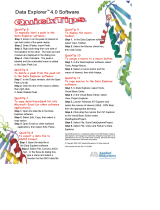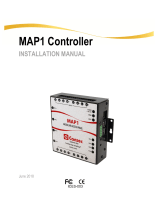
ISS Technology Update Volume 7, Number 10
3
Meet the Expert— Brian Purcell
Mark Brian Purcell is an HP hardware architect whose job is critically important to
the success of AMD-based ProLiant servers. He is responsible for reviewing the
future chipset and processor offerings, and he works closely with vendors to
evaluate how their products can best be integrated into all HP server products. He
also provides feedback to vendors on what features are needed to ensure that HP
products meet or exceed customer requirements and expectations. Scot Wurster,
Brian’s manager, adds “Brian is very willing to help anyone facing a problem.
When presented [with] a challenge from marketing, the gears [start] turning in his
head. He will come up with a solution to fit the customer’s need—usually a couple
of different ways to fulfill that need He has a positive ‘can do’ attitude, and he
works very well with other people. He also works closely with AMD, providing
product feedback to improve their products’ reliability and performance..”
Brian successfully balances his work and personal life through hobbies such as
golf, motorcycles, radio-controlled sailplanes, and coaching his son’s (Colin)
baseball team. But his most interesting hobby is playing trombone in the HP
Houston Jazz Band. Brian has played in the Jazz Band since 1996. Brian’s wife
of 12 years, Sharon, plays saxophone and directs the band. They also play in
their church orchestra. But there’s more—Brian has two brothers (Mike and Bill)
who also work for HP. Below are excerpts from an interview with Brian.
Why did you decide to become an engineer?
Brian: While growing up, my curiosity led me to disassemble electrical devices
such as Walkmans, radios, etc. My father always told me, “If you break it, you’d
better know how to fix it!” When I was eleven, we got our first computer. I quickly
learned how to use it, and I developed my programming skills. At fourteen, I
developed an algorithm to generate magic squares (in multiples of four). As computer programming became second nature to
me, I decided that a blended degree in Electrical Engineering and Computer Science would be perfect!
What is your most interesting research?
Brian: Modifying and applying my father’s principle into our system architectures. “If [it breaks], you’d better know [what went
wrong and] how to fix it.”
I am a huge proponent of embedding logic analyzer functionality within our CPLDs (complex programmable logic devices) to
help engineering and service teams quickly determine the source of system behaviors and faults. As a normal part of our system
validation and margin testing, we occasionally encounter power and/or thermal faults. It is often difficult or time-consuming to
repeat the failure; thus, it is very important that we catch and log the failure on the first occurrence.
This is especially important when our servers have multiple PCAs,where each PCA has multiple, independent voltage regulators.
We have to be able to indicate the exact failing PCA or replaceable voltage regulator module. When we can identify the exact
component that failed, it improves customer satisfaction.
The embedded logic analyzer functionality has matured significantly over the past few product generations, and it continues to
be successfully employed by multiple platforms across both the ISS and Business Critical Solutions (BCS) server teams. The
current architecture improves the fault detection capabilities and provides a very detailed system status “snapshot” at the time of
failure.
Name: Brian Purcell
Title: Hardware Architect - Industry
Standard Servers, Technology Solutions
Group
Years at HP: 14
University/Degree
• Texas A&M University, BS in Computer
Engineering (May 1994)
• Engineering Scholars Program
U.S. Patents: 9








